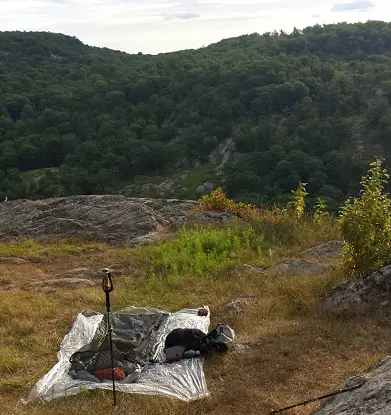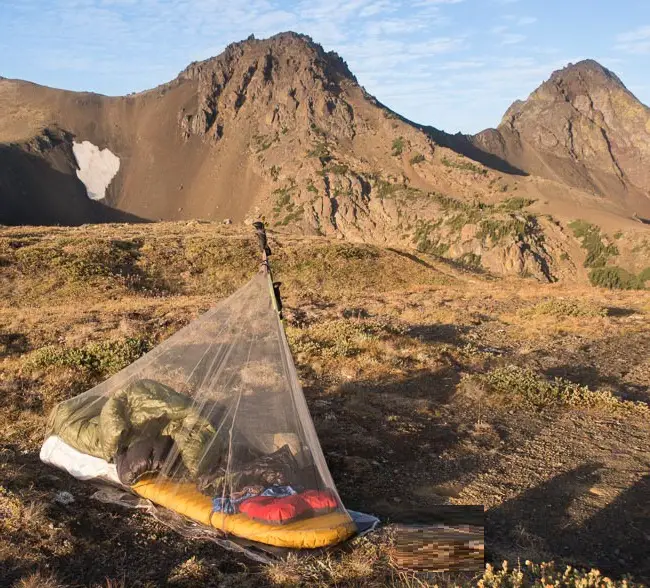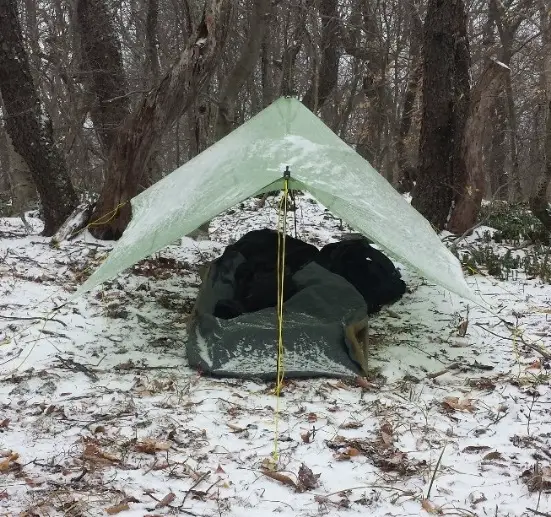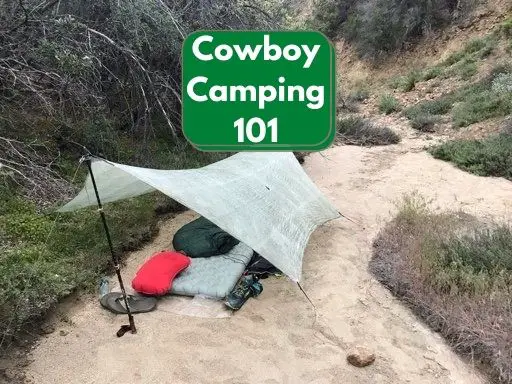Cowboy camping is a great way to experience nature and spend time outdoors. It can also be a fun and affordable way to camp with your family or friends.
In this article, we will provide you with a guide on how to cowboy camp, as well as some tips and advice on what gear you will need.
What Is Cowboy Camping?
Cowboy camping is camping outside without a tent, usually in a sleeping bag on the ground.
It’s all about enjoying the simplicity of nature and using what you have to sleep under the stars to form a greater bond with the great outdoors.
Why Cowboy Camp?

There are many reasons why people choose to cowboy camp.
For some, it is a way to connect with nature and experience the outdoors in a different way.
For others, it may be because they do not have a tent or do not want to carry one around.
Cowboy camping can also be cheaper than traditional camping, especially if you already have the necessary gear.
You’ll also build confidence in your outdoor survival skills, have an easier time finding an area to camp in, and can save tons of time while setting up and breaking down your campsite.
How To Cowboy Camp
It takes a little planning to execute sleeping under the stars correctly and safely, so a little preparation definitely pays off.
Here’s what you’ll want to find out before your cowboy camping trip:
- Weather. Are there any weather conditions like rain or safety concerns for where you’ll be camping?
- Permits. Make sure the place you’ll be camping allows for camping without the use of tents, and check ahead to obtain any necessary permits or authorization.
- Water Source. Make sure you bring enough water or have an identified water source ahead of time. Dehydration is a serious concern and can be fatal.
- Wildlife. Do you know what types of animals or large predators may be in the area? Prepare by bringing along bear spray or additional defense if needed.
Cowboy Camping Gear

In order to cowboy camp, you will need some basic gear and supplies. This includes:
- Sleeping Bag. This is going to provide you the warmth to sleep comfortably throughout the night in the exposed outdoors, even if the outside temp drops into low temperatures. Make sure your sleeping bag is rated to the lowest expected temperature of the area you’ll be camping in.
- Ground Cloth or Hammock. A ground cloth or hammock is going to provide a layer of separation between your sleeping bag and the bare ground, which is important to keep your gear clean and dry so moisture doesn’t seep into your sleeping bag while you sleep.
- Tarp. A tarp can double as a ground cloth or can be used to build a lean-to shelter to keep rain off you in case of bad weather. Bring along tent stakes and string for your tarp as well.
- Sleeping Pad (Optional). A sleeping pad won’t weigh much and is easy to carry even if you’re a gear minimalist, but will provide plenty of extra comfort. Self-inflatable sleeping pads are best.
- Bivy Sack (Optional). A bivy bag will provide an extra barrier against insects, wind, and moisture.
- Supplies. Bringing along food, bug spray, and sunscreen as necessary to make sure you can handle whatever the situation throws at you.
Choosing The Best Camping Spot

Picking a good spot is critical for having a great outdoor camping experience.
Here’s what to look for in a cowboy campsite:
- Make Sure It’s Flat. Keeping your campsite as level as possible will be more comfortable and safer than sleeping on a slope.
- Find Natural Cover. Look for a spot under a tree if possible, but any type of “cover” will do. This will help to cut down on wind.
- Trees are the best type of cover because their roots pull moisture out of the air and ground, which will keep condensation from forming on your sleeping bag and will naturally keep the ground beneath you drier.
- Higher Ground Is Better. In case of rain, you don’t want water rushing in where you’re sleeping! Choose higher ground when possible, and never set up camp in a spot that’s already wet.
- Never Sleep In A Cave. Caves are homes to vermin and other pests, which can chew through your gear and carry disease. Although it makes for a cool story, it’s simply not worth it!
How To Set Up Camp
Setting up a spot for open-air camping is easy. Follow these simple steps:
- Once you’ve picked out your spot, clear off any brush, sticks, and rocks.
- Lay your ground cloth or tarp on the ground.
- Roll out your sleeping pad (if you brought one).
- Roll out your sleeping bag.
- Make sure to never sleep too close to an open fire.
That’s it! You’re ready to cowboy camp.
Cons Of Cowboy Camping
Getting back to basics, increasing your connection with mother nature, and stargazing at night as you fall asleep next to the fire: what’s not to love, right?
There are a few drawbacks to this style of camping to be aware of, including exposure to weather, insects, and animals.
Fortunately, these won’t pose any problems as long as you prepare using the steps we outlined in the guide above.
Wrapping Up Our Guide To Cowboy Camping
We hope you enjoyed our no-tent camping guide and that it’s inspired you to get outside and give this fun style of camping a try.
Let us know how it goes in the comments below!
While you’re here, check out our other great camping guides:
- The best campfire cooking kits
- The best camping string lights
- How to lock a tent
- The best e-port tents
- How to make a DIY camping bed
- Tents that fit a queen air mattress
- How long does wood take to dry after rain?
- How long does Jetboil fuel last?
- The best heated camping chairs
- The best tent waterproofing spray

